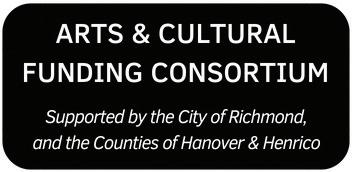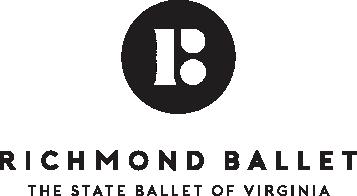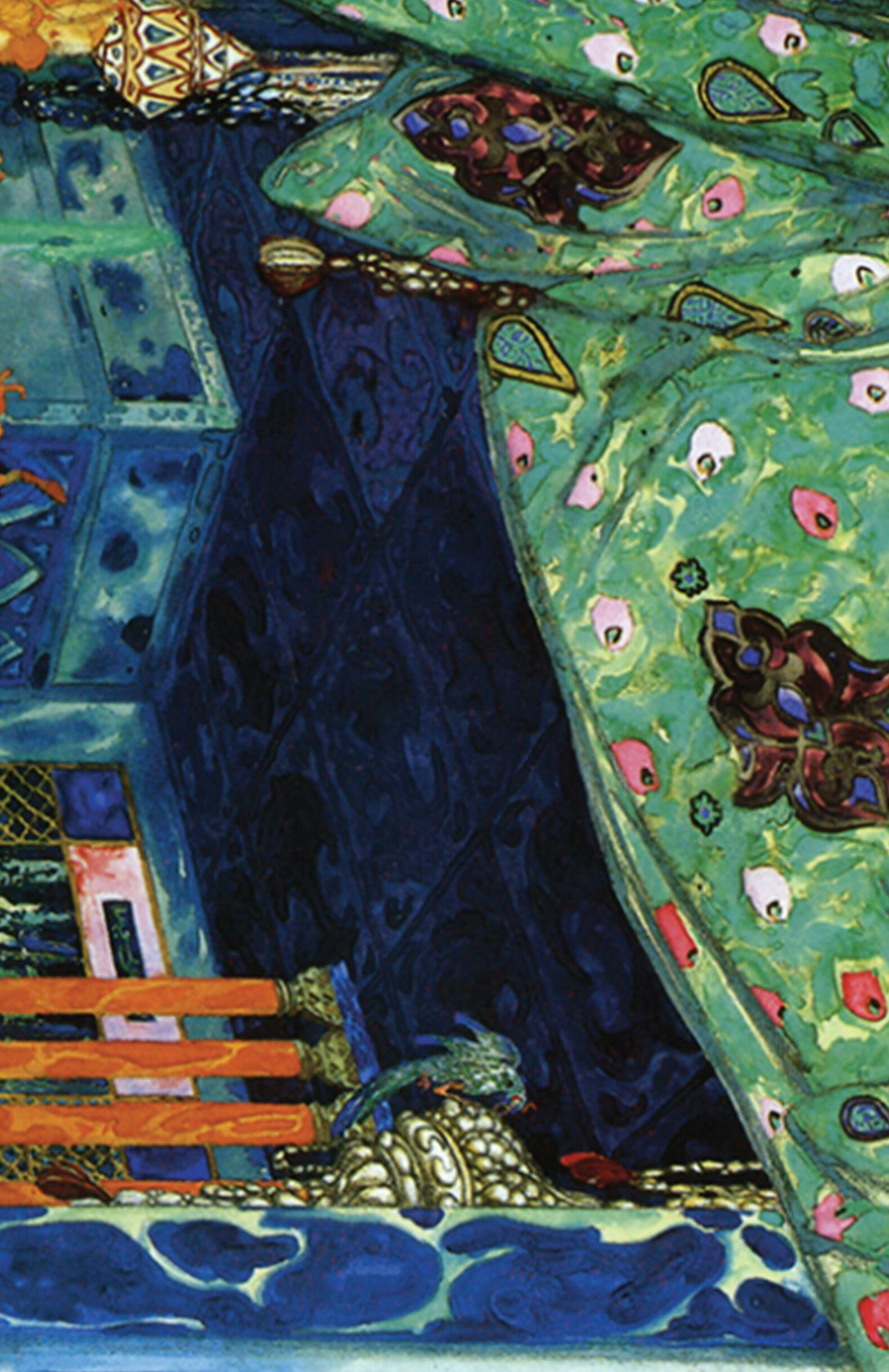RICHMOND SYMPHONY MUSICIAN ROSTER

Scheherazade
Symphony Series
Valentina Peleggi CONDUCTOR
Inbal Segev CELLO
Courtney Collier & Michael Duncan DANCERS FROM THE RICHMOND BALLET
Malcolm Burn CHOREOGRAPHER FROM THE RICHMOND BALLET
viola
Molly Sharp
PRINCIPAL
The Mary Anne Rennolds Chair
Hyo Joo Uh
ASSOCIATE PRINCIPAL
Stephen Schmidt
Zsuzsanna Emödi
Derek Smith
Johanna Beaver
Alexandra Takasugi
Elizabeth O’Hara Stahr
Dorothy Couper
Sandra VandeGeijn
cello
Neal Cary PRINCIPAL
Jason McComb
ASSOCIATE PRINCIPAL RSL Chair
Ryan Lannan
Schuyler Slack
Peter Greydanus
Barbara Gaden
Ismar Gomes
Kayla Mathes
Gracie Sommer
Charlotte Roberts
bass
Andrew Sommer PRINCIPAL
Rumano Solano
ASSOCIATE PRINCIPAL
Kelly Ali
Peter Spaar
Matt Gold
Lee Phillip
Morgan Daly
Luis Primera
flute
Mary Boodell
PRINCIPAL
Jennifer Debiec Lawson
ASSOCIATE PRINCIPAL
Catherine Broyles
oboe
Victoria Chung
PRINCIPAL
Lauren Williams*
ACTING ASSOCIATE PRINCIPAL














clarinet
David Lemelin
PRINCIPAL
Edward Sundra
ASSOCIATE PRINCIPAL
Sara Reese
bassoon
Thomas Schneider
PRINCIPAL
Felix Ren
ASSOCIATE PRINCIPAL
Nicholas Ritter
CONTRABASSOON horn
Dominic Rotella
PRINCIPAL
Devin Gossett
SECOND HORN
The Luzi Wheeler Leisinger & George Wheeler Chair
Erin Lano
ASSOCIATE PRINCIPAL
Roger Novak
Cody Halquist
trumpet
Samuel Huss
PRINCIPAL
Brian Strawley ASSOCIATE PRINCIPAL
trombone
Evan Williams
PRINCIPAL
Scott Winger
Scott Cochran
tuba
Conrad Shaw
timpani
James Jacobson
PRINCIPAL
percussion
Clifton Hardison
PRINCIPAL
David Foster
Curt Duer
Don Johns
Dave Walker
harp
Lynette Wardle
PRINCIPAL
Sponsored by:
VAUGHAN WILLIAMS (1872-1958)
Fantasia on a Theme by Thomas Tallis
ANNA CLYNE (B. 1980)
DANCE
I. when you’re broken up II. if you’ve torn the bandage off III. in the middle of the fighting IV. in your blood
V. when you’re perfectly free
Inbal Segev, CELLO
Courtney Collier, DANCER
Michael Duncan, DANCER
INTERMISSION
RIMSKY-KORSAKOV (1844-1908)
Scheherazade, Op. 35
I. Largo e maestoso - Allegro non troppo
II. Lento - Allegro molto
III. Andantino quasi Allegretto
IV. Allegro molto
1:57 approximate program length
* one year appointment
Correct as of 1/23/23
28 SAT • 8:00 pm Carpenter
29 SUN • 3:00 pm Carpenter
JAN
Theatre at Dominion Energy Center
Theatre at Dominion Energy Center
Fun fact:
Ralph Vaughan Williams, Fantasia translates aspects of English sacred choral music into purely instrumental terms.
Ralph Vaughan Williams: Fantasia on a Theme by Thomas Tallis
Ralph Vaughan Williams, the 150th anniversary of whose birth is being celebrated this season, represents one of the central figures of the modern English Renaissance in music. Fittingly, he had his breakthrough success with a work inspired by a giant of the original English Renaissance of the Tudor era, Thomas Tallis (1505-85). The 1910 premiere of the Fantasia at Gloucester Cathedral (as part of the prestigious Three Choirs Festival) brought the name of Vaughan Williams — then in his late 30s — to the attention of a wider public.
The Fantasia sprang from the work in which Vaughan Williams had engaged when he co-edited the English Hymnal in 1906, a milestone in Anglican sacred music. It was in this anthology that he initially encountered the tune by Thomas Tallis that he chose as the basis for the Fantasia. The melody in question is the third of nine tunes gathered from Tallis for another sacred music collection in 1597.
Scored for a string orchestra, the Fantasia translates aspects of English sacred choral music into purely instrumental terms, including its use of spatial effects. Vaughan Williams imitates this by dividing the strings into three groups: a larger string orchestra, a smaller one, and a string quartet (i.e., four solo players: two violins, viola, and cello).
dance. The orchestral work COLOR FIELD (2020), for example, pays homage to the painter Mark Rothko. In The Seamstress, Clyne was moved by a poem by William Butler Yeats to write a violin concerto in the form of “an imaginary one-act ballet.”
For DANCE, which features the instrument on which the composer herself was trained, Clyne turned to a five-line poem by the 13thcentury Persian poet and Sufi mystic Jalāl al-Dīn Muhammad Rūmī (otherwise known simply as Rumi):
Dance, when you're broken open.
Dance, if you've torn the bandage off.
Dance in the middle of the fighting.
Dance in your blood.
Dance, when you're perfectly free.
Clyne says she wanted to create a work in which each movement has “its own personality, its own character” and was drawn to the Rumi poem because “it’s short, has repetition, a clear form of five lines, and a strong physicality … [and] a sense of urgency …”
Did you know?
Dance is inspired by the 13th-century Persian poet Jalāl alDīn Muhammad Rūmī (otherwise known simply as Rumi). Did you know?
Scheherazade is a major female character and the storyteller in the famous narrative of the Middle Eastern collection of tales known as The Thousand and One Nights or The Arabian Nights
Fun fact:
Inbal Segev is performing a series of concerts this year to honor the 20th anniversary of the Taki Alsop Conducting Fellowship (TACF), which Marin Alsop founded to encourage other female conductors to follow their career path.
The theme itself, comprising two parts, is amenable to being fragmented and then reassembled in new transformations and different configurations of the string ensembles. For example, in the final part Vaughan Williams reprises the theme in a version for solo violin and viola against the full orchestra. Dramatic contrasts of volume and changes in meter are also significant elements in the soundscape of the piece.
Anna Clyne: DANCE
When the cellist Inbal Segev was first introduced to Anna Clyne by the pioneering conductor Marin Alsop, the composer’s “juxtaposition of old and new” intrigued her. Segev remarks that Clyne’s music “has an old-soul sensibility but is fresh and modern at the same time.” The cellist commissioned the concerto DANCE, premiering it in 2019 and releasing her acclaimed recording of the work the following year.
These performances of DANCE are part of a series of concerts Segev is performing this year to honor the 20th anniversary of the Taki Alsop Conducting Fellowship (TACF), which Alsop founded to encourage other female conductors to follow their career path — including music director Valentina Peleggi, a TACF alumna.
Born in London in 1980 and a resident of the United States since 2002, Clyne was nominated for a Best Contemporary Classical Composition Grammy Award in 2015 for another of her concertos, the double violin concerto Prince of Clouds.
For these performances, dancers from the Richmond Ballet join with the Richmond Symphony, adding another dimension to DANCE. Collaborative creativity is a signature of Clyne’s artistic practice. Her music is often rooted in inspirations from the visual arts, poetry, and
Each of DANCE’s five movements corresponds to a line of the poem, beginning with “tender and delicate music” to depict “the fragility of being shattered apart.” In contrast, the solo cello drives the aggressive, rapid-paced second movement. Like Vaughan Williams, Clyne has a gift for evoking the sense of a timeless past. Reminiscent of the Baroque, the slow third movement uses a recurring melody to conjure a moment of frozen time. The expansive fourth movement presents another though very different example of repeating patterns as the strings sequentially take up each line presented by the solo cello in a kind of looping process. The final movement (the first part of the piece Clyne wrote) unfolds as a quest for melody of pure simplicity — and, with its suggestion of Jewish folk music, pays tribute to the composer’s father, to whom she dedicated the concerto.
Nikolai Rimsky-Korsakov: Scheherazade, Op. 35
Night is the ideal time for weaving fantasies and spinning tales, and it was during the night that Scheherazade told her famous series of stories that came to symbolize “the exotic East” for generations of children eager to learn about Sinbad, Ali Baba, and Aladdin. Collected under the title The Thousand and One Nights or The Arabian Nights, these stories have inspired countess painters, dramatists, and composers like Nikolai Rimsky-Korsakov. His four-movement symphonic suite named after the heroine was a hit at its premiere in St. Petersburg in 1888 and has delighted audiences ever since.
As the general framework for his orchestral suite, Rimsky provided this scenario, borrowing the frame that unifies the collection together: “The Sultan Shahriar, convinced of the deceitfulness and infidelity of all women, had sworn an oath to put each of his wives to death after their first night. But the Sultana Scheherazade saved her life by the expedient of arousing the Sultan’s interest in a series of
SCHEHERAZADE
PROGRAM NOTES
tales she recounted over a period of 1001 nights … Driven by curiosity, the Sultan postponed the execution of his wife from day to day, and eventually renounced his bloody plan.”
From this scenario, Rimsky developed a kind of concerto for orchestra or suite (with elements of a violin concerto). He initially included suggestive descriptions for each movement but later decided to omit them: “The Sea and Sinbad’s Ship” (I), “The Kalendar Prince” (II), “The Young Prince and the Young Princess” (III), and “Festival at Baghdad. The Sea. The Ship Breaks against a Cliff Surmounted by a Bronze Horseman" (IV).
Scheherazade establishes a stark contrast between the cruel Sultan and the masterful narrator from the outset. Aggressive, brass-laden music is associated with the unyielding the Sultan. This is followed by a series of dreamy chords, the curtain-raiser to a sweetly melancholy violin solo representing the voice of his new wife Scheherazade, teller of tales. This contrast serves as a prelude but also returns, in varied forms, throughout what follows, with Scheherazade’s violin music threading the movements together.

One of the great musical evocations of the sea in the first movement is followed by a movement loosely based on the principle of theme and variations. The tender simplicity of the lyrical and songful third movement gives way to a widely varied final movement that showcases Rimsky-Korsakov’s flair for orchestral color and textural contrast. Dramatically, musically, and emotionally, this music stages the long-delayed closure.
Malcolm Burn, CHOREOGRAPHER
A New Zealand native, retired from Richmond Ballet in 2022 after 35 years with the organization and is now an Artistic Associate Emeritus. During his 25-year dancing career, he performed in companies such as London Festival Ballet, The Royal New Zealand Ballet, The National Ballet of Zimbabwe, Ballet West, and P.A.C.T. Ballet in South Africa where he won the Ivan Soloman Award for Best Male Dancer in 1973, 1976, and 1980. A Richmond Ballet company dancer from 1987 to 1993, Mr. Burn remains fondly remembered for his principal roles in full-length ballets, for the memorable works created on him, and especially for his riveting portrayal of “Death” in The Green Table. He became a Company ballet master upon retirement from dancing with Richmond Ballet and was named an Artistic Associate in 1998. As Artistic Associate, Mr. Burn re-staged many of the classic full-length ballets and choreographed his own versions of Romeo & Juliet and Cinderella, as well as other shorter pieces including Pas Glazunov and A Tribute. Prior to coming to Richmond Ballet, Mr. Burn was co-director of Ballet Arizona. He is currently a repetiteur for The John Butler Foundation.


Courtney Collier, DANCER

Courtney was raised in Northern Virginia and at the age of 16 moved to Connecticut to start her professional training at the Nutmeg Ballet Conservatory. After a year, she accepted the offer to train at the Houston Ballet, then returned to Virginia two years later and accepted a traineeship at Richmond Ballet. This is Courtney’s second season with RBII, Richmond Ballet’s second company.
Michael Duncan, DANCER
Michael is originally from Atlanta, Georgia where he began his dance training at the age of 6. He trained at Georgia Metropolitan Dance Theatre in Marietta, Georgia until the age of 17. In 2019 he was invited to further his dance training with the Cincinnati Ballet in their Professional Training Division on scholarship. He studied at Cincinnati Ballet for 3 years working closely alongside the company. Michael joined Richmond Ballet this season as an RBII Apprentice.

PROGRAM NOTES
Program notes (c) 2023 Thomas May
Valentina Peleggi, CONDUCTOR


Since her appointment on July 1, 2020 Music Director Valentina Peleggi has revitalized the Symphony’s artistic output. While focusing on developing the orchestra’s own sound she has also launched new concert formats, joined national co-commission partnerships, started a 3 year composer in residence programme, launched conducting masterclasses in collaboration with the local universities, and championed neglected composers from diverse backgrounds. During the pandemic she sat on the jury of the first virtual Menuhin Competition hosted by the Richmond Symphony.
Highlights of the 22/23 season include a ground-breaking augmented reality project, also Mahler’s Resurrection Symphony and a special concert with soloist Yo-Yo Ma. Peleggi is the Richmond Symphony’s sixth Music Director, and first woman in that leadership role.

This season Peleggi debuts with the New World Symphony, Kansas City Symphony, Rochester Philharmonic and at the Grant Park Festival in Chicago, and in Europe with the Residentie Orkest, Liege Philharmonic, Gulbenkian Orchestra, Nuremburg Symphony and the orchestra of Opera North, also conducting the opening concert of the World Economic Forum in Davos. Engagements in recent seasons have included the Colorado and Baltimore symphonies, Royal Philharmonic, BBC National Orchestra of Wales, Brussels Philharmonic, Norrkoping Symphony, Orchestra della Toscana, and Pomeriggi Musicali di Milano.
Inbal Segev, CELLO
Inbal Segev is “a cellist with something to say” (Gramophone). Combining rich tone and technical mastery with rare dedication and intelligence, she has appeared with orchestras including the Berlin Philharmonic, London Philharmonic, Israel Philharmonic, Baltimore Symphony, St. Louis Symphony and Pittsburgh Symphony, collaborating with such prominent conductors as Marin Alsop, Stéphane Denève, Lorin Maazel, Cristian Măcelaru and Zubin Mehta. Committed to reinvigorating the cello repertoire, she has commissioned new works from Timo Andres, Avner Dorman, Gity Razaz, Dan Visconti and Anna Clyne. Recorded with Alsop and the London Philharmonic for Avie Records, Segev’s 2020 premiere recording of Clyne’s new cello concerto, DANCE, was an instant success, topping the Amazon Classical Concertos chart; its opening movement was chosen as one of NPR Music’s “Favorite Songs of 2020,” receiving eight million listens on Spotify, and Segev has continued to tour extensively with the piece. At the start of the pandemic, she launched “20 for 2020,” a commissioning, recording and video project featuring 20 cutting-edge composers, including John Luther Adams, Viet Cuong and Vijay Iyer, who is also writing a concerto for Segev to premiere in and perform throughout the 2022-23 season. Her previous discography includes acclaimed recordings of the Elgar Cello Concerto, Romantic cello works, and Bach’s Cello Suites, while her popular YouTube masterclass series, Musings with Inbal Segev, has thousands of international subscribers and over two million views to date.
A native of Israel, at 16 Segev was invited by Isaac Stern to continue her cello studies in the U.S., where she earned degrees from Yale University and The Juilliard School, before co-founding the Amerigo Trio with former New York Philharmonic concertmaster Glenn Dicterow and violist Karen Dreyfus. Segev’s cello was made by Francesco Ruggieri in 1673.
 Scan QR Code for full Biography
Scan QR Code for full Biography


























 Scan QR Code for full Biography
Scan QR Code for full Biography